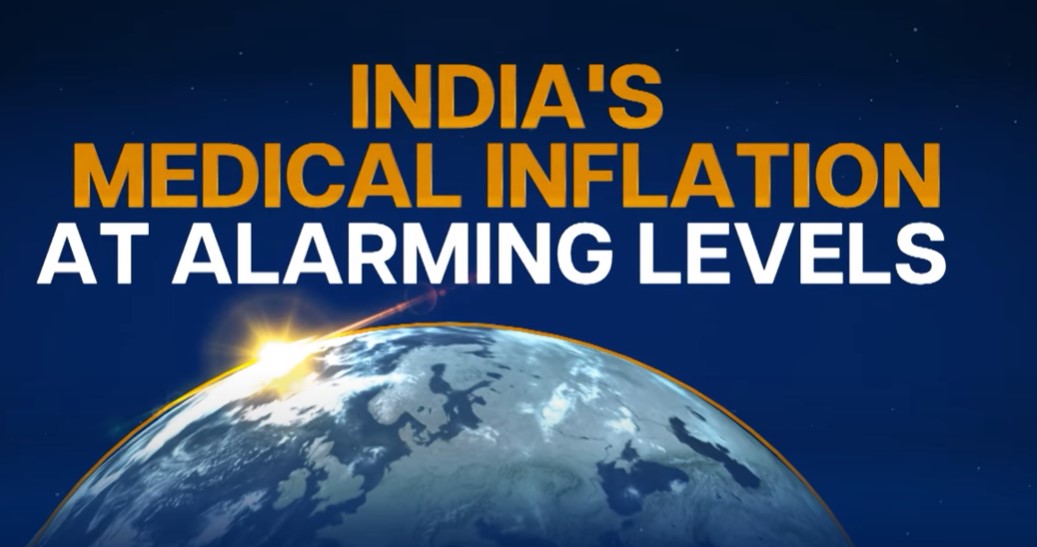India’s Medical Inflation – Now let’s shift our attention back to India. When the pandemic hit, India’s healthcare industry faced numerous challenges, including affordability, shortage, and access. The healthcare system was greatly affected, leading to a significant increase in medical inflation. Despite the subsiding of the pandemic, healthcare costs in India have not come down. According to a new report, India’s medical inflation stands at 14%, which is more than twice as high as the retail inflation. It is also the highest medical inflation in Asia, surpassing countries like China, Indonesia, Vietnam, and the Philippines.
Medical inflation has a wide-ranging impact, affecting the cost of medicines, medical treatments, and procedures. For example, the cost of hospitalization in India has more than doubled in the last 5 years. This is concerning because medical inflation erodes family savings and depletes reserves for emergencies.
Let me illustrate the dire situation. 55% of all hospitalizations in India are financed through household savings, while 23% are done through borrowings, including credit cards and loans. Some even resort to selling family gold. This financial burden leads to people avoiding seeking medical care. 59% of Indians skip their annual health checkups and 90% neglect regular doctor consultations. They postpone tests and procedures until their symptoms worsen, which ultimately drives up the costs.
Every year, 7% of Indians are pushed below the poverty line solely due to medical bills. In 2018, 55 million Indians were pushed into poverty because of medical expenses. This is an incredibly cruel and unfair situation, but not surprising considering that nearly 70% of health costs in India are paid out of pocket by citizens, both in rural and urban areas. Shockingly, 82% of urban households are not covered under health insurance.
The problems persist even for those with insurance. Patients continue to pay out of pocket because most insurers do not cover all expenses, such as those related to medical aids used during surgery. Additionally, medical insurance premiums have been steadily rising, with a 10% to 25% increase in the last year alone. Health insurance claims have been growing faster than medical inflation in the last 5 years. Average claims for infectious diseases have risen by 160%, and for cataract treatment, the claim has risen by 54%. Moreover, treatment costs are also escalating rapidly.
As a result, average health coverage becomes inadequate within every 5 years, especially for those who rely on their corporate health insurance. Companies often provide group coverage where the cost remains stagnant despite the increasing cost of medical treatments. This multifaceted problem has a straightforward outcome: medical inflation is causing significant financial strain on individuals and families, taking an immense emotional toll.
This is not a situation that can be treated as business as usual. This is about healthcare, and employers need to do better. In India, with a workforce of 522 million people, only 15% receive health insurance support. The government also needs to step in, as the burden of healthcare expenses disproportionately affects the country. This is a race we do not want to win. It is a policy issue, not just a personal finance problem. Every citizen has the right to healthcare, and we must ensure they are not one hospitalization away from financial ruin.

